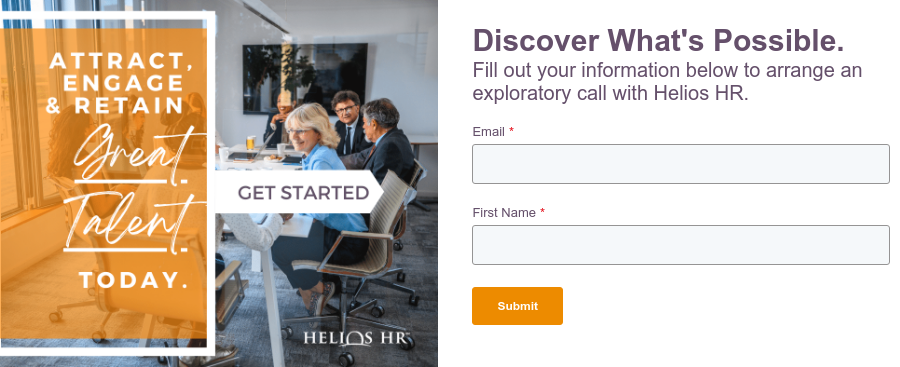By: Alicia Anzalone on March 4th, 2025
5 Ways to Use AI in Your Hiring Process
Artificial Intelligence is here and rapidly becoming part of everyday life. Almost three-quarters (72%) of HR professionals use AI tools at least once per week, and that figure will only grow in the coming years.
That said, not every organization is comfortable with AI tech. We’ve seen some concerns and even a few lawsuits emerge from the use of AI, especially in the world of hiring. As a result, most organizations are still progressing with Artificial Intelligence—but they’re doing so carefully.
How can your company safely and effectively use Artificial Intelligence when hiring? In this blog, we’ll look at some of the tools and best practices you can put into effect right now. First, however, let’s talk about the pros and cons of AI in hiring.
Pros and cons of Artificial Intelligence in recruitment
In 2024, productivity software company Workday was sued for discriminatory hiring practices. These claims focused on Workday’s use of Artificial Intelligence to make decisions related to hiring, including rejecting certain candidates.
The lawsuit argues that there’s no difference between decisions made by Artificial Intelligence and those made by human employees. In both cases, the decision-maker is acting as an agent of the hiring company; if the decision is discriminatory, the hiring company is liable.
Whatever the outcome of this particular lawsuit, it’s an important reminder that AI isn’t perfect. AI tools can create new problems, such as:
- Discriminatory or suboptimal hiring decisions
- “Hallucinations”, which are data-processing errors that sometimes occur with AI
- Loss of human touch in the hiring process
That said, AI can certainly help improve your hiring outcomes. HR professionals are adopting these tools because AI allows them to scale up capacity and reduce overall time to hire. Some of the benefits of AI adoption you can expect to see include:
- Faster hiring decisions
- Improved communications with individual candidates
- Unbiased decisions (if your processes are correctly designed)
- Reduced admin overhead for hiring managers
- Detailed data analysis, enabling better decision-making
5 ways to incorporate AI in your hiring process
Handing your recruitment process over to a machine is probably a bad idea. Instead, it’s helpful to think about how a human-centric process can be improved by adding a little AI.
There are many ways to do this, and we should see more use cases emerge as the technology evolves. For now, here are five ways you can use AI to improve your candidate experience.
1. Craft job descriptions
Job descriptions are one of the most important elements of the hiring process. They’re also the most challenging, as it’s hard to balance all stakeholder ideas and requirements in one document. It’s harder still to condense those requirements into a few paragraphs that will appeal to the right candidate.
This is an area where generative AI can help. Artificial Intelligence can take your notes and turn them into a short, accurate piece of text. You can also use AI to generate multiple different drafts, and your team can choose the best one.
Tools to use: You can create job descriptions using most Generative AI platforms like ChatGPT or Microsoft Copilot. You can also try HR-oriented tools such as Textio or Workable.
2. Skills matching
Most Applicant Tracking Systems (ATS) will include features that match applicants by looking for certain keywords in the candidate’s resume. AI technology takes things further, as the AI can “read” the resume and make advanced decisions about suitability.
Some AI tools can also analyze candidate information from public sources such as LinkedIn and Facebook. This allows you to build a more detailed profile of each applicant and assess their suitability for the role.
Tools to use: Speak to your ATS vendor to learn more about available AI tools. Alternatively, look at tools like SeekOut or HireEZ.
3. Automated note-taking
Automated note-taking tools are a game-changer in meetings and seminars. In an interview environment, they allow recruiters to put down the proverbial pen and really interact with candidates. This connection is how you recruit the best of the best and anchor them into the organization right from the start.
Note-taking also makes it easier for other stakeholders to participate. Your team can share conversation transcripts, highlight important sections, and flag follow-up questions for the next stage. The result is a shorter time-to-hire and faster action on desirable candidates.
Tools to try: Otter.ai is an established general-purpose tool for taking meeting notes. You might also consider some HR-specific solutions, such as Metaview and Noota.
4. Managing candidate communications
Most job applicants would agree that hiring takes too long. The worst part, from the candidate’s perspective, is not knowing what happens next. Hiring managers don’t always have time to respond to candidate queries, and this can cause the potential hire to look elsewhere.
AI-powered chatbots can help improve candidate communications. A dedicated AI agent can answer queries day or night, offering updates on recent developments and answering any questions. This will help keep talent engaged while your hiring team deliberates on their final decision.
Tools to try: Your ATS may offer this functionality, so speak to your vendor. Some independent chatbot tools include those from Humanly and HireVue.
5. Data analysis
Your talent pipeline contains a lot of data that can help improve your hiring process. How many applicants do you receive per vacancy? What’s the average time to hire? How many applicants progress to the latter stages? AI tools can help perform detailed analysis of this information.
AI can also help with “rediscovery”—identifying candidates you might have overlooked previously. The right AI tool can perform advanced analysis and skills matching, allowing you to pinpoint talented applicants. This is a useful way to develop your talent pipeline and increase your recruiting capacity.
Tools to try: There are a number of tools in this space, such as Skima, Fetcher and RippleMatch. Take a look at pricing and compatibility options, and make sure that your choice can integrate with your other HR software.
Remember: AI should unlock the human touch
Recruiters are good at putting the pieces of the puzzle together. Seeing where the company is going and the skills (soft skills included) will be impactful. They are also focused on identifying which management styles will work best with the candidate. When using AI tools and getting the candidate to open up, Recruiters are able to increase employee retention, align candidates with the right manager, and help managers really utilize the talent that has been recruited to the organization.
Also, by being genuine, recruiters are able to form a bond with a candidate that will give them an anchor in the organization as they begin to migrate from candidate to team member. AI is making life easier in many ways. However, the one thing that AI can’t do is replace the connection and innovative skills that recruiters bring to the table.
Need some additional expertise in your HR team? Book a call with a Helios HR consultant today!





